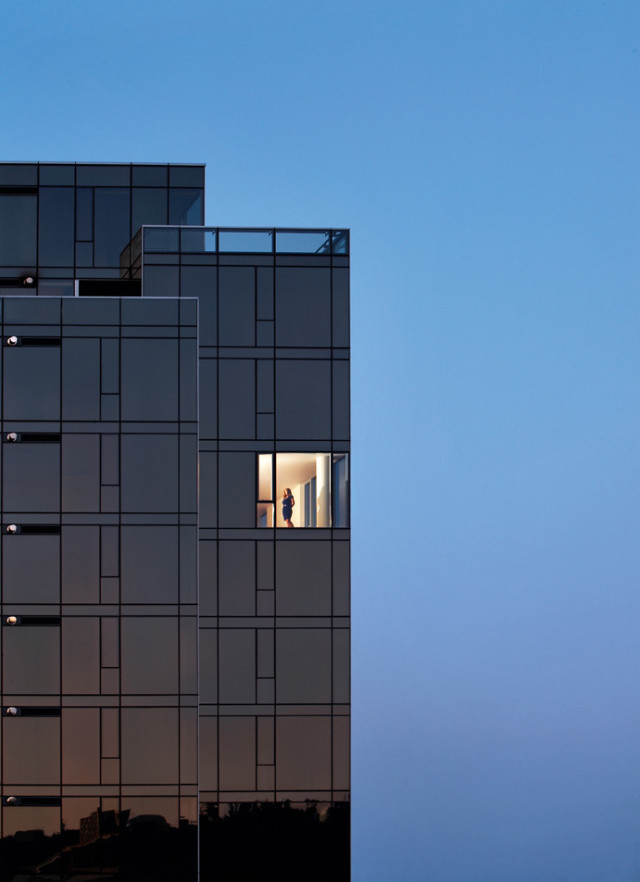Home Alone

Your conscience may love the LEED gold design features of the Cyan, Gerding Edlen’s sparkling new apartment complex at SW Fourth Avenue and Mill Street, and your stomach might swoon when you spy the 36-inch stainless-steel Traeger wood-pellet smoker out back in the private, meticulously groomed courtyard. But it’s your index fingers that will adore the Cyan most of all: it takes only two punches on the building’s call box to scan through all of the residents’ names.
“I guess we’re pretty easy to find,” jokes 25-year-old Stu Schrager, one of the building’s residents. “You don’t see many people around here.”
Originally conceived as condominiums, the Cyan instead opened in May as a 352-unit luxury apartment building, but as of early August it was still only about 16 percent full. Like many of Portland’s newest, boldest apartment and condo developments, the Cyan is being held hostage by the sagging housing market—a situation worsened by the recent explosion of condo buildings in the metro area (at least 57 have opened their doors in Portland during the past year alone, and at press time, more than 2,100 condo units were for sale; half of those were vacant).
Elsewhere in the city, condos aren’t faring much better: the 214-unit Atwater Place (pictured above) on the South Waterfront is only about 30 percent full after opening in the winter of 2007, as is the 937, the distinctive 16-story Pearl District landmark built by developers Patrick Kessi and Geoff Wenker that opened in October. But there may be no bigger ghost town than Hoyt Street Properties’ Encore, also located in the Pearl—a 15-floor complex in which only 22 of the 177 units have been sold.
The glut of empty units isn’t something the city’s real estate agents enjoy talking about. (In fact, one group of local brokers refused to be interviewed for this story because they didn’t “want to have anything to do with negativity.”) Indeed, while Joycean scholars might appreciate the irony of a city filled with beautiful buildings whose gleaming, empty windows reflect the ugly truth of the times, it’s hardly the kind of material one wants to put in a press release.
However, it turns out these ornate shells aren’t just skyscraping reminders of our woeful economy; they’re also a kind of catalyst for community. The emptiness acts, in an odd way, as a kind of social glue: with so few folks to call “neighbor,” residents tend to band together.
“It’s a tighter community,” says Lesley Poirier, the South Waterfront’s director of community relations, whose job entails helping to knit together the 1,000 or so people who call the new district home. “People feel like they have some say in how the neighborhood is formed.”
Poirier explains that residents have formed committees on everything from nature and greenspace to arts and culture. South Waterfront community planners even put together an impromptu classical concert in one of the Atwater’s vacant commercial spaces this summer. “Try doing that in a crowded complex,” jokes Atwater resident Florence Rocks, who shares a first-floor apartment with her yellow lab, Sammie.
There are other perks, too: you’re pretty much guaranteed a parking spot near the front door; you don’t have to deal with crowded elevators (Schrager can’t recall ever sharing a ride with anyone); and, come twilight, when the hammering from heavy equipment erecting even more towers dies down, you’ll hear … quiet.
“From a selfish standpoint, it’s nice to have the place to yourself,” says 937 resident Joe Lambert, a recent Bay Area transplant. “It feels like you’re getting in on the ground floor of something special.”And for now, in many of the city’s high-rise dwellings, there’s a good chance you’ll have that floor all to yourself.



